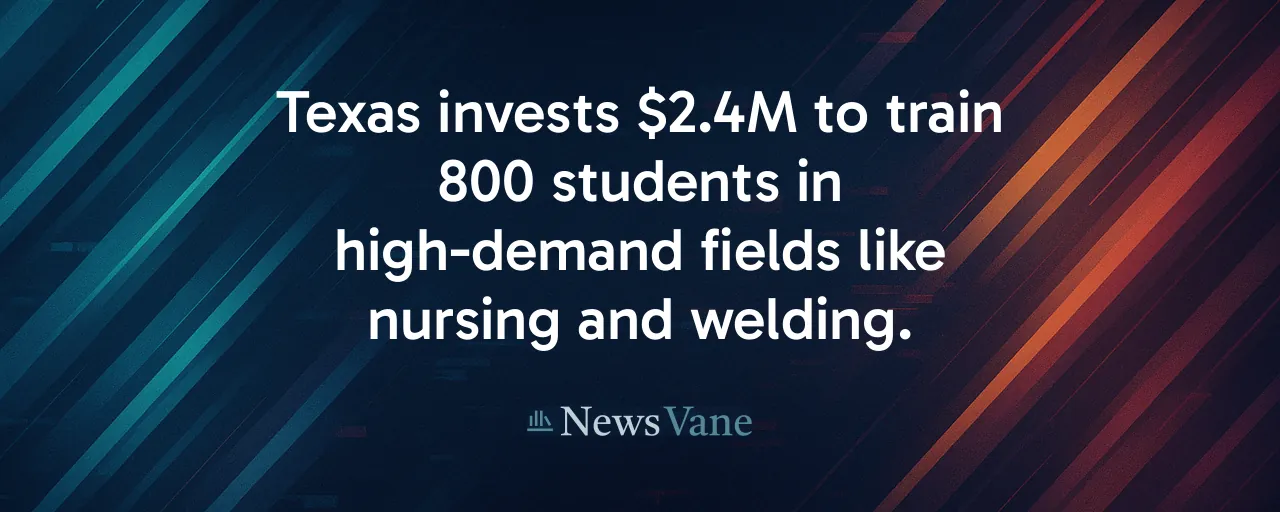Equipping the Next Generation
At a lively event at Lone Star College's North Harris campus, Texas officials celebrated a $2.4 million investment in the state's future workforce. Announced by Governor Greg Abbott on June 11, 2025, the grants will fund career training programs at 10 Gulf Coast schools, preparing over 800 students for jobs in fields like nursing, welding, and civil engineering. The initiative, led by the Texas Workforce Commission, responds to urgent employer demands for skilled workers.
These funds target a pressing issue, as Texas's booming economy needs more trained professionals than its schools currently produce. With industries like healthcare and construction growing rapidly, the state faces a shortage of qualified workers. The Jobs and Education for Texans (JET) grants will buy equipment, such as simulators and diagnostic tools, to give students hands-on experience before they enter the job market.
Breaking Down the Grants
The awards address diverse regional needs. Alvin Community College received $349,980 to train 165 students as refinery operators, vital to Texas's energy industry. College of the Mainland secured $324,916 to prepare 85 students for registered nursing roles, tackling a critical healthcare gap. Harmony Public Schools-Houston North will use its $233,225 to train 125 students as civil engineers, while Shepherd ISD's $350,000 grant will support 130 students studying to become vocational nurses.
Smaller programs also benefit. Palacios ISD, working with Wharton County Junior College, got $105,970 to train 21 health technologists. Windham School District's $295,742 will equip 77 incarcerated students with welding skills, offering a chance at stable employment after release. Each grant funds equipment designed to mirror real-world job conditions, ensuring graduates are job-ready.
Why the Urgency?
Across the U.S., industries face daunting labor shortages. By 2030, manufacturing may lack 2.1 million skilled workers, and healthcare requires 2.3 million new allied-health professionals by 2031. In Texas, where energy and medical sectors thrive, the challenge is acute. Nearly 40% of trades workers are over 45, and only 9% are under 25. Rapid technological advancements further demand workers who can adapt quickly.
Supporters of workforce training programs view JET as a smart investment. Since 2016, the program has distributed over $105 million, with graduates often earning 20-30% more than regional averages. Advocates for industry-aligned education praise the grants for matching training to employer needs. Meanwhile, those focused on fairness emphasize that such programs can expand opportunities for underserved students, though they call for added supports like counseling and transportation to ensure access.
Differing Views on Solutions
Debates persist over how to address the skills gap. Some policymakers applaud Texas's approach, citing JET's local focus and measurable results as a model for efficiency. They argue that state-led programs, rooted in employer partnerships, deliver practical outcomes without federal red tape. Others advocate for larger national investments, such as expanding the $1.4 billion Perkins V fund, to ensure consistent support across states.
Another point of contention is program scope. While JET prioritizes high-demand fields, some educators worry it may overlook students with interests outside trades or healthcare. Striking a balance between immediate workforce needs and individual aspirations is complex. Public-private partnerships, a cornerstone of JET, aim to align curricula with industry standards, but clear contracts and oversight are essential to prioritize student interests over corporate agendas.
What's Next for Texas?
The $2.4 million in grants marks a significant commitment, a vital component of the broader solution. Texas's economy hinges on a skilled workforce, and JET's track record, placement rates above 85% and strong starting wages, suggests it's on the right path. Expanding outreach to diverse groups, including women and underrepresented communities, will be key to filling gaps in fields like engineering and trades.
As schools deploy their new equipment, success will depend on effective training and job placement. Can these programs deliver graduates who meet employer expectations? Will they inspire other states to invest similarly? For now, Texas is banking on these grants to strengthen its workforce and sustain its economic momentum.
This initiative reflects a broader truth, that skills training is critical in a world where jobs evolve quickly. Texas is investing in its students, betting that targeted education can build a stronger, more resilient economy. The results will shape the state's future and offer lessons for the nation.
